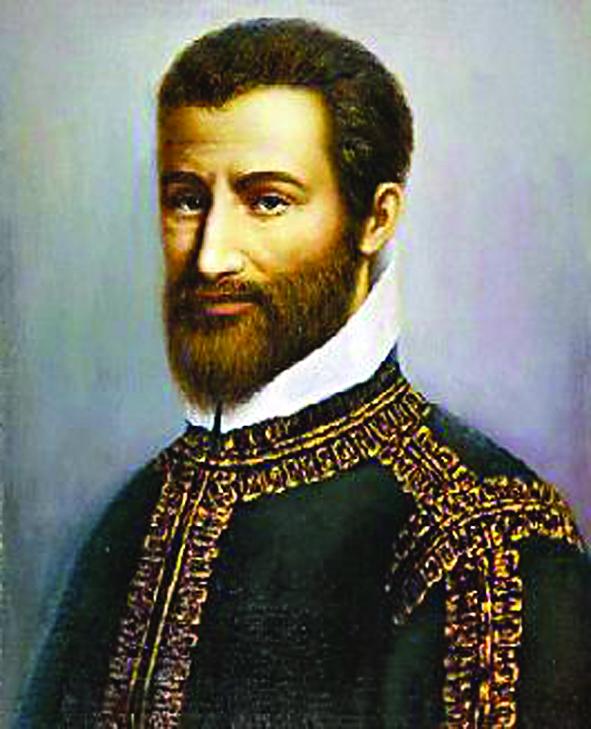Places where the physical world manifests the spiritual in miraculous ways
By ITV staff

The entrance to the Church of San Francesco, which contains the Eucharistic Miracle of Lanciano. It is annexed to the homonymous convent of the Friars Minor Conventual.

Inside are the famous relics of the Eucharistic miracle of Lanciano (photo in the center), dating from the early 700s.

A painting illustrating the Miracle
Italy is famous for many spectacular sights – wonders of art, architecture, music, culture and cuisine – in addition to its wonders of nature – majestic mountain ranges, placid lakes, bucolic countrysides and sunny seashores.
But none of them can quite match the sight that awaits tucked inside a church in the medium-sized city now called Lanciano, once called in ancient Roman times Anxanum. The name, “Lanciano,” itself bears witness to the Christian roots of the city: it refers to the “Lance” of St. Longinus, the Roman soldier in Scripture who was born in Lanciano and came to believe in Christ after witnessing his death on Golgotha and using his lance to pierce Our Lord’s side. The original Church of St. Longinus, namesake of the city, was built by Basilian monks in the 8th century (early 700s).
The story goes that a monk who had been plagued by doubts about the Real Presence of Jesus in the Blessed Sacrament was saying Mass there one day.
It was to be a day like no other:
This time, when the monk pronounced the words of consecration, the host was miraculously changed into flesh and the wine into blood. The monk was awestruck. Weeping joyously, he regained his composure. He called the congregation around the altar and said, “O fortunate witnesses, to whom the Blessed God, to confound my unbelief, has wished to reveal Himself visible to our eyes! Come, brethren, and marvel at our God, so close to us. Behold the Flesh and Blood of our Most Beloved Christ.” Those who witnessed the miracle soon spread the news throughout the surrounding area. (Fr. William Saunders, Catholiceducation.org)
In the 1970s, Pope Paul VI authorized scientific testing to be performed on samples of the flesh and blood in the centuries-old reliquary. The flesh was determined to be human heart muscle; the blood, human type AB. It contained no preservatives, yet after 13 centuries, it was fresh and whole.

Pope Benedict XVI prays in front of “Veronica’s Veil” at the Sanctuary of the Holy Face in Manoppello, Italy, Sept. 1, 2006. (CNS photo/Max Rossi, Reuters)
That Eucharistic miracle remains visible and unchanged after 1300 years, now housed in a newer church, San Francesco, built over the site of the original Church of St. Longinus — the Saint of the Lance.
Another breathtaking sight, in the tiny Italian town of Manoppello, is the incredible, perhaps supernatural, portrait of a Man — some say He is the Man of Sorrows — which resides there in a small church. His face appears on a “canvas” made of byssus, a silk-like material woven from the beards of sea mussels — and the origin of the image is inexplicable in purely human terms.
There are no traces of paint or any other material on the delicate, centuries-old byssus, yet the image is unmistakable. Some say it must be the face of Christ, imprinted on the sudarium (one of the burial cloths used in ancient Judaism) at the time of his death and resurrection. Others suggest it may be the cloth of Veronica, impressed by the face of Christ when He was carrying His cross to Golgotha.
Even the cloth’s human origins are only known as far back as 1638, when, according to records, a local pharmacist donated it to the Capuchins at the church.
German Catholic journalist Paul Badde added new layers of possibly relevant information in his 2018 book on the veil, titled The Holy Veil of Manoppello: The Human Face of God; British writer Kevin Turley comments:
“The Holy Veil of Manoppello also tells of a Jewish Rabbi’s remarkable vision concerning the Veil; and of the unexpected announcement in 2011 from the Director of the Vatican Museums admitting that an ancient relic pertaining to the Holy Face had disappeared from Rome during the Lutheran sacking of the city in 1527. This disclosure set off a different line of inquiry for Badde regarding the Veil. The book asks if the Veil is the same cloth as that used by Veronica, the woman depicted in the Sixth Station of the Cross wiping the face of Christ. Badde tells of skeptical professors who become enthusiastic campaigners for the Veil’s authenticity, of the links between the Veil and ongoing research into the Shroud. Throughout, Badde conveys the drama and the mystery at the heart of the story he tells.”
On September 1, 2006, Pope Benedict knelt in prayer before the Veil of Manoppello — likely the first time, some say, that a Pope had beheld the Veil since St. Peter.
Six days later, at his general audience in St. Peter’s Square, Pope Benedict proclaimed, “We can truly say that God was given a human face, that of Jesus, and henceforth, if we really want to know God’s face, we have only to contemplate the face of Jesus!”






Facebook Comments